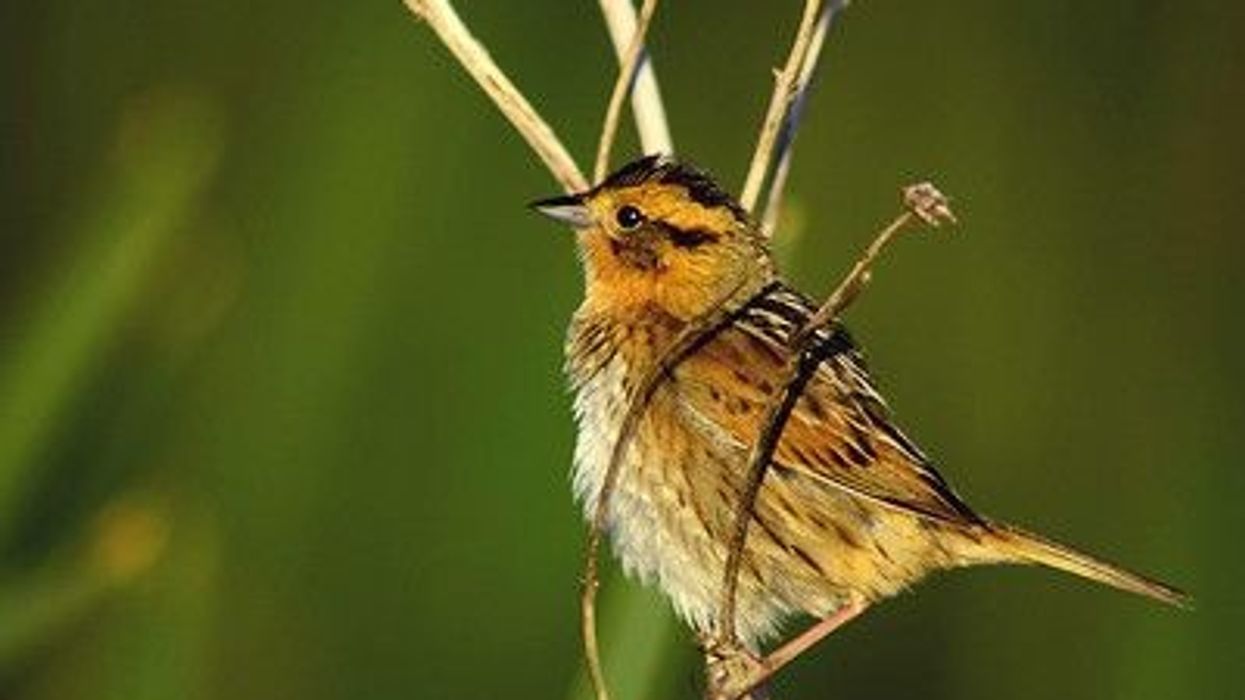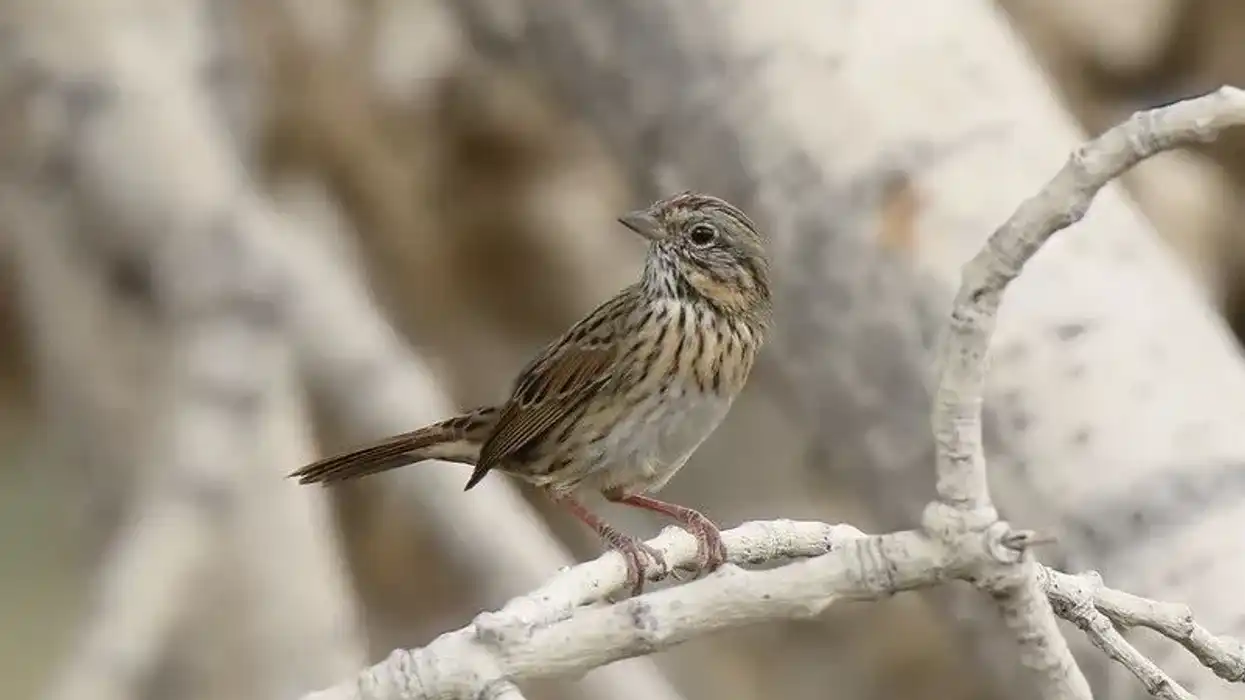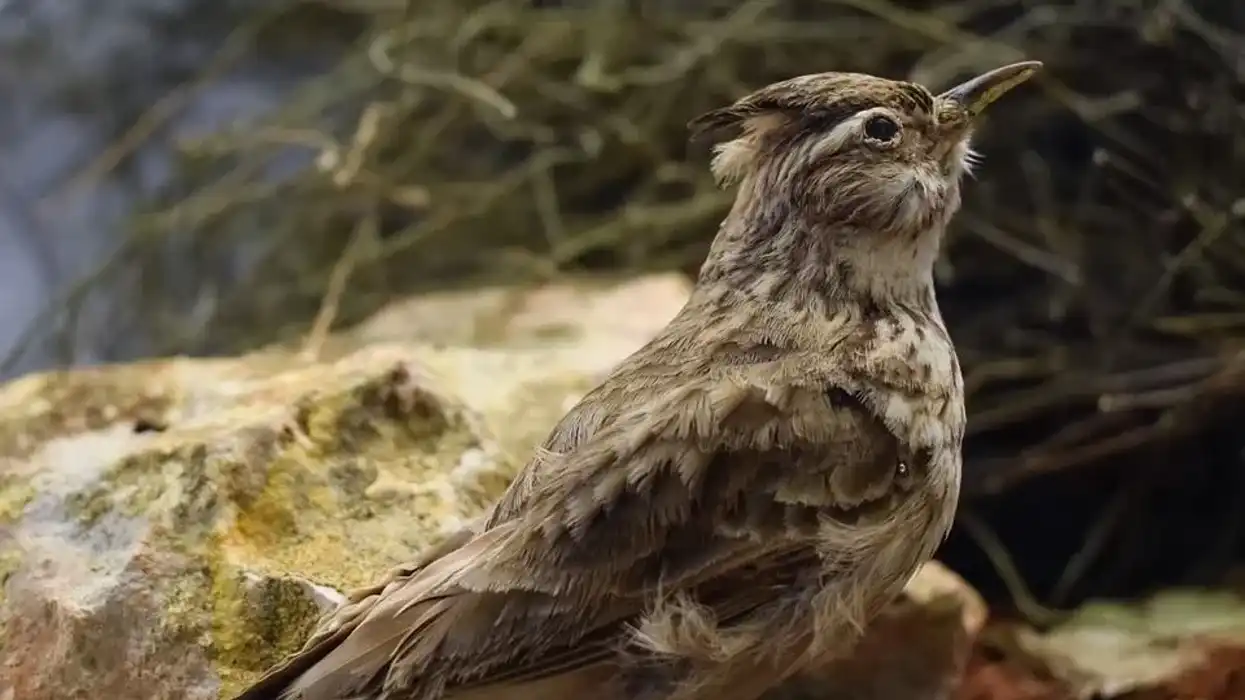Artemisiospiza nevadensis, commonly known as the sagebrush sparrow, is a sparrow species found in North America, mainly regions of northwestern Mexico and western United States.
This bird species prefers scrub habitats, lands having shrubs such as sagebrush, chamise, or any open desert land.
The North American sage sparrow is a prime feeder of seeds and insects, jumping on the ground with its tail cocked and looking around for food.
When it comes to the breeding range, sagebrush sparrow remain attached to the breeding ground and return to the same territory every year to raise the young ones. It is also around the breeding season when you can hear the males sing beautiful songs early in the morning while perched on a shrub in their habitats.
For more relatable content, check out these blue jay facts and calliope hummingbird facts for kids.
Sagebrush Sparrow Interesting Facts
What type of animal is a sagebrush sparrow?
The sagebrush Sparrow (Artemisiospiza nevadensis) is a type of sparrow.
What class of animal do sagebrush sparrows belong to?
The Artemisiospiza nevadensis species belong to the class of birds.
How many sagebrush sparrows are there in the world?
About 4,300,000 birds of this sparrow species (of order Passeriformes, family Passerellidae) population are said to be surviving.
Where does a sagebrush sparrow live?
The sagebrush sparrow range is centered around the lands of western North America. You can find them between the famous Rocky Mountains and the coastal mountains of the west. During the cold winter days, they shift towards Southwestern America, northern Sonora, Chihuahua, and parts of Mexico.
What is a sagebrush sparrow's habitat?
These birds are found in shrubby regions and dry foothills. They enjoy open spaces with not much lush vegetation. As the name suggests, they live among sage brush, chamise, saltbush, mostly and also among other shrubs. In winter, they shift and inhabit grasslands and desert scrubs.
Who do sagebrush sparrows live with?
This bird species is said to live in loose flocks.
How long do sagebrush sparrows live?
We are unaware of the lifespan of this sparrow species. Generally, all sparrows live up to 3-5 years.
The oldest sage sparrow which has been in records was a male sparrow. This sparrow was banded back in 2001 in California, and surprisingly was recaptured again in the same state in the year 2010, after 9 years 3 months.
How do they reproduce?
The nesting site is less than 4 ft (1.22 m) above ground level. The sagebrush sparrow breeding range is among the low shrubs.
If these sparrows are successful in producing eggs in a particular breeding range, sage sparrow birds remain faithful to it and frequently return to the same site year after year. The nest is in the shape of an open cup, made with small sticks and twigs.
The inside of the nest is lined with animal hair, weeds and dry grass.
Usually, the female lays between 2-5 eggs. These eggs have a pale blue to blue-white tint, and are randomly spotted with black, gray and brown speckles. The incubation takes about two weeks.
A pair of sagebrush sparrows raise a maximum of two broods per year. Once the eggs hatch open, both parents take over the parental duties and look after feeding the hatchlings. After 10-11 days, the young sagebrush sparrow is all ready to leave the nest.
What is their conservation status?
The conservation status of sagebrush sparrow is 'Least Concern'.
Sagebrush Sparrow Fun Facts
What do sagebrush sparrows look like?
The sagebrush sparrow description begin with its body size; this bird species are among the smaller songbirds. However, for sparrows, they are of medium size. The gray head of this bird is round, with a short, thick beak.
This bird also has a long tail, slightly darker than the remaining body. The size is slightly larger than that of a Brewer’s sparrow. The sagebrush sparrow has brown upperparts.
The head is of a soft-gray hue, and the underparts are white in color. There is a dark spot placed right in the middle of its breast.
There is a white ring surrounding the eye, and a white spot right in front of the eye. The eyes are black in color. There is a dark stripe near the throat.
The outer feathers have light edges. The juvenile sagebrush sparrow has a uniform light brown color, even on its head. All sagebrush sparrows have subtle patterns on the skin.
How cute are they?
We do find the sagebrush sparrow (Artemisiospiza nevadensis) really cute!
How do they communicate?
The sagebrush sparrow song is something well known about this bird. In the early summer days, the males sing a lively song all the way as it perches from the shrub tops.
The song is made of elements which are well-tuned for the windy weather. The melodious patterns and its frequencies are well carried in the open landscape. They sing even more during the breeding season.
How big is a sagebrush sparrow?
The sagebrush sparrow adult size falls in the range of 4.5-6 in (11.4-15.25 cm).
It is about two times the size of the bee hummingbird.
How fast can sagebrush sparrows fly?
We do not know the speeds at which these sparrows (of order Passeriformes, family Passerellidae) can fly. However, other sparrow species, like the House Sparrow, can fly at speeds of about 28.6 mph (46 kph).
How much do sagebrush sparrows weigh?
This gray head bird weighs just about 0.5-1 oz (14.17-28.35 g).
What are the male and female names of the species?
No species names are assigned for the female and male sage sparrows.
What would you call a baby sagebrush sparrow?
All baby sparrows are called chicks.
What do they eat?
This sparrow is mainly a ground forager. It perches around shrubs and bushes and swoops down if it spots anything on the ground or between the plant stems. The sagebrush sparrow also scratches the soil with its feet to look for food. If these birds are not nesting they form small flocks and go around foraging together.
This is an omnivorous species and a smart, opportunistic feeder. The primary diets of sagebrush sparrow include grasshoppers, mole crickets, termites, beetles, ants, and other tiny insects. Spiders, small fruits, plant seeds, and other vegetation are also part of their diet. However, during the nonbreeding days, this bird is a primary seed-eater.
Are they poisonous?
Sage sparrows are not poisonous.
Would they make a good pet?
We do like the idea of keeping these North American birds as a pets!
Did you know...
There are so many birds which look just like the sparrow: dunnocks, house finches, and even the arremon.
Birds of the Arremon species look just like sparrows, but with black heads.
Among the sparrow species, the Artemisiospiza nevadensis is said to have the largest of all territories. Each bird is very defendant of its territory.
Earlier, the Bell's sparrow was thought to be the same as the Artemisiospiza nevadensis, and instead was called the Bell's sagebrush sparrow.
During migration of sagebrush sparrow, these birds fly all the way to Mexico.
Some threats to sparrow population include habitat loss, bush encroachment and bushfires. Thus, conservation measures are to be taken for the safety of these birds.
How do you identify a sparrow?
The most easy way to identify sparrows is their body size. These birds have small, compact bodies. They are really active and love jumping around.
They have smooth but flat heads. They have distinct eye rings which make their eyes pop out. They also have multiple stripes on their cheeks, chin, throats, crowns.
Compared to the small bodies, they have long tails which stand out straight. For many breeds of sparrows, the outer tail feathers are brown.
The bill is small, in the right proportion to the head of the bird. It is also sharp and pointy, without any curves. They sing melodious songs which can be easily identified and differentiated from other species.
What's the difference between a bell's Sparrow and sagebrush sparrow?
In the earlier days, the bell's sparrow and sage sparrow species were thought to be conspecific. It was in 2013 when the bell sparrow-sagebrush sparrow split was annouced by the American Ornithological Society.
Let us identify the difference between the bell’s sparrow vs sagebrush sparrow. Both the bird species are located in North America.
When it comes to the body size, the bell is said to have slightly smaller anatomy than the sagebrush sparrow.
Bell’s sparrows have either no streaks, or really light streaks on their backs. The color of these streaks are light coffee brown. In contrast, the sage sparrow has dark, well-defined streaks on the backs.
The gray head of the Bell’s sparrow has a distinct blackish malar which stands out on the gray face. The same malar is present on the sagebrush sparrow birds as well, but it is of a light gray hue.
The Bell’s sparrow is mainly found in southeastern California, Baja California as well as south Nevada. There is limited migration by this species towards the south in winter.
The sage sparrow is known to breed mainly in the Great Basin. For migration, they travel southwards in the winter season.
Here at Kidadl, we have carefully created lots of interesting family-friendly animal facts for everyone to discover! For more relatable content, check out these savannah sparrow facts and bee-eater facts pages.
You can even enjoy at home by coloring in one of our free printable chirping sparrow coloring pages.









